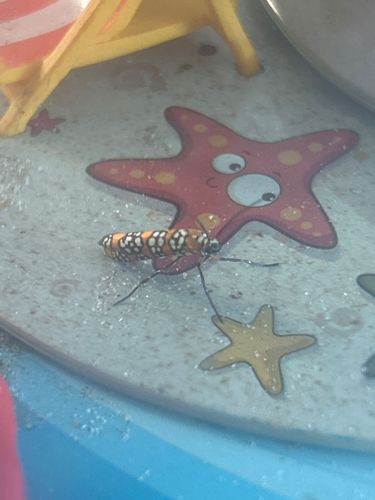Ailanthus Webworm Moth
Scientific Name: Atteva aurea
Order & Family: Lepidoptera, Attevidae
Size: Wingspan typically ranges from 20 to 30 mm (0.8 to 1.2 inches).

Natural Habitat
Commonly found in urban and suburban areas where its host plant, the Ailanthus tree (tree of heaven), is present. Also found in natural areas where Ailanthus grows.
Diet & Feeding
The larvae (caterpillars) feed exclusively on the leaves of the Ailanthus tree (Ailanthus altissima). Adult moths feed on nectar from various flowers.
Behavior Patterns
The caterpillars are gregarious and spin silken webs around the leaves and branches of their host tree, feeding within these protective webs. They can defoliate portions of the tree. Adults are diurnal (active during the day) and are often seen flying around their host trees or visiting flowers. Multiple generations can occur within a year.
Risks & Benefits
Potential risk: Can cause significant defoliation to Ailanthus trees, which are often considered invasive species. However, as Ailanthus is an invasive exotic tree in many regions, the moth's feeding can be seen as a form of biological control, helping to reduce the spread and impact of this problematic tree. It poses no known direct risk to humans or domestic animals.
Identified on: 9/14/2025